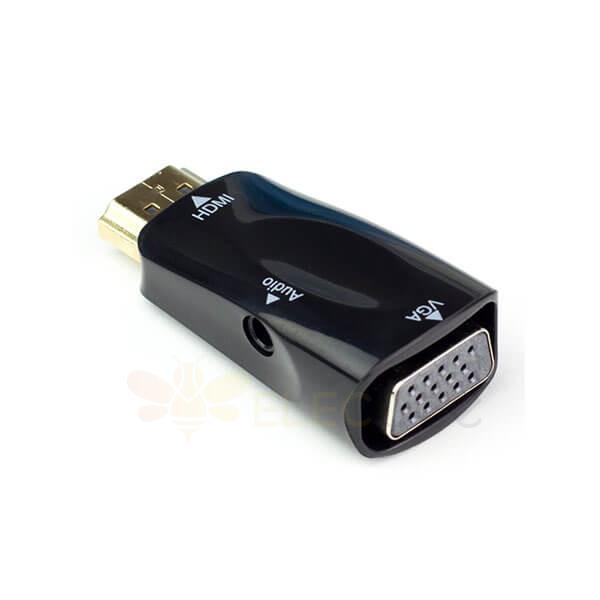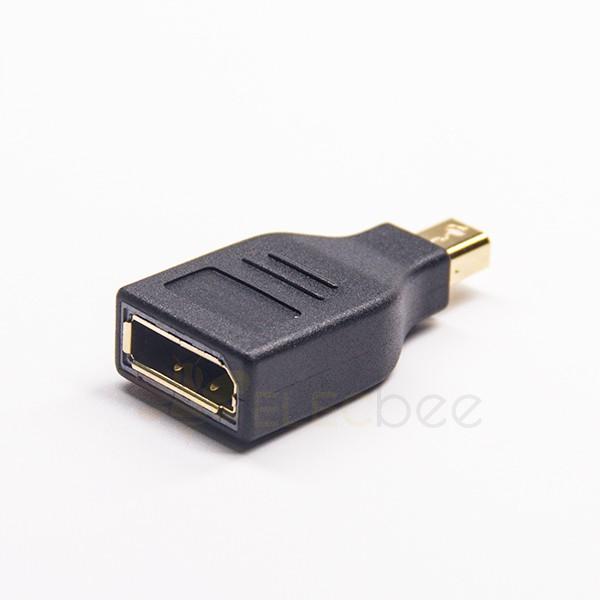デジタル機器が普及した今日の世界では、ビデオコネクタオーディオおよびビデオ信号をあるデバイスから別のデバイスに転送するために不可欠なコンポーネントとなっています。 市場で最も人気のある 2 つのビデオ コネクタは次のとおりです。HDMI(高品位マルチメディア インターフェイス) およびディスプレイポート。 HDMI と DisplayPort は両方とも、モニター、テレビ、ラップトップなどのデバイスをコンピューター、ゲーム コンソール、またはその他のデバイスに接続するために使用されるデジタル ビデオおよびオーディオ インターフェイスです。 これら 2 つのコネクタは似ているように見えますが、仕様、機能、アプリケーションの点で明確な違いがいくつかあります。 この記事では、HDMI と DisplayPort の違いを説明し、どのコネクタがニーズに適しているかを判断するのに役立ちます。

HDMI と DisplayPort の概要
HDMI と DisplayPort は、次のような古いアナログ ビデオ コネクタを置き換えるために開発されました。VGAとDVI。 HDMI は 2002 年に初めて導入され、すぐに高解像度ビデオおよびオーディオ伝送の標準となりました。 HDMI は DVI と下位互換性があるため、古いデバイスを新しいディスプレイに簡単に接続できます。 一方、DisplayPort は VESA (Video Electronics Standards Association) によって 2006 年に導入されました。 DisplayPort は、HDMI よりも高い解像度とリフレッシュ レートをサポートできる、より柔軟なインターフェイスになるように設計されました。

接続性と互換性
HDMI と DisplayPort の大きな違いの 1 つは、接続性と互換性です。 HDMI は、テレビ、Blu-ray プレーヤー、ゲーム機などのデバイスをディスプレイに接続するために最も広く使用されているインターフェイスです。 HDMI コネクタにはさまざまなバージョンがあり、最新バージョンは HDMI 2.1 で、120 Hz で最大 10K の解像度をサポートします。 HDMI ケーブルは広く入手可能であり、ほとんどのデバイスと互換性があります。 ただし、古いデバイスでは HDMI に接続するためにアダプターが必要な場合があります。
一方、DisplayPort は主にコンピュータやラップトップをモニタやディスプレイに接続するために使用されます。 DisplayPort コネクタにはさまざまなバージョンがあり、最新バージョンは DisplayPort 2.0 で、60 Hz で最大 16K の解像度をサポートできます。 DisplayPort ケーブルは HDMI ケーブルほど一般的ではありませんが、市場では人気が高まっています。 DisplayPort には DVI または HDMI との下位互換性がないため、古いデバイスでは DisplayPort に接続するためにアダプターが必要になる場合があります。
解像度とリフレッシュレート
HDMI と DisplayPort のもう 1 つの大きな違いは、解像度とリフレッシュ レートに関する機能です。 HDMI と DisplayPort はどちらも高解像度ビデオをサポートしていますが、一般的に解像度とリフレッシュ レートの点では DisplayPort の方が優れていると考えられています。 最新バージョンの HDMI (HDMI 2.1) は 120Hz で最大 10K の解像度をサポートできますが、DisplayPort 2.0 は 60Hz で最大 16K の解像度をサポートできます。 DisplayPort は HDMI よりも高いリフレッシュ レートもサポートしているため、動きの速い画像を必要とするゲームやその他のアプリケーションに最適です。
オーディオとビデオの品質
HDMI と DisplayPort はどちらも高品質のオーディオとビデオの送信をサポートしていますが、オーディオとビデオ信号の処理方法にはいくつかの違いがあります。 HDMI はドルビー デジタルや DTS などのマルチチャンネル オーディオをサポートしており、ホーム シアター システムに最適です。 HDMI は、画像の色とコントラストを向上させる 3D ビデオと HDR (ハイ ダイナミック レンジ) コンテンツもサポートしています。 一方、DisplayPort はディスプレイ ストリーム圧縮 (DSC) をサポートしており、より高い色深度と解像度を実現します。 DisplayPort は、AMD FreeSync や NVIDIA G-Sync などの適応同期テクノロジもサポートしており、ゲーム中の画面のティアリングや途切れを軽減します。
電源とケーブルの長さ
HDMI と DisplayPort のどちらかを選択する際に考慮すべきもう 1 つの要素は、電源とケーブルの長さです。 HDMI ケーブルは接続されたデバイスに電力を送信できるため、テレビやプロジェクターなどのデバイスでの使用に最適です。 HDMI ケーブルは、より長い長さのものも入手できるため、大きな部屋や講堂での使用に適しています。 DisplayPort ケーブルは電力を伝送せず、通常は短い長さで入手できるため、デスクトップ モニターでの使用に適しています。
料金
最後に、HDMI と DisplayPort のどちらかを選択する際に考慮すべき要素はコストです。 HDMI ケーブルとコネクタは、一般に DisplayPort ケーブルとコネクタよりも安価です。 ただし、コストの差はそれほど大きくなく、どちらのインターフェイスも比較的手頃な価格です。 ケーブルとコネクタのコストは、ケーブルのバージョンと長さ、コネクタの品質によって異なります。
結論
結論として、HDMI と DisplayPort は 2 つの一般的なデジタル ビデオ コネクタであり、仕様、機能、アプリケーションの点で明確な違いがあります。 HDMI は、テレビ、Blu-ray プレーヤー、ゲーム機などのデバイスをディスプレイに接続するために広く使用されており、DisplayPort は主にコンピューターやラップトップをモニターやディスプレイに接続するために使用されます。 HDMI は DVI と下位互換性があるため、古いデバイスを新しいディスプレイに簡単に接続できますが、DisplayPort は DVI または HDMI と下位互換性がないため、古いデバイスを DisplayPort に接続するにはアダプタが必要になる場合があります。
解像度とリフレッシュ レートに関しては、一般に DisplayPort が HDMI よりも優れていると考えられています。 DisplayPort は 60Hz で最大 16K の解像度をサポートできますが、HDMI 2.1 は 120Hz で最大 10K の解像度をサポートできます。 DisplayPort は HDMI よりも高いリフレッシュ レートもサポートしているため、動きの速い画像を必要とするゲームやその他のアプリケーションに最適です。
HDMI と DisplayPort はどちらも高品質のオーディオとビデオの送信をサポートしていますが、オーディオとビデオ信号の処理方法にはいくつかの違いがあります。 HDMI はドルビー デジタルや DTS などのマルチチャンネル オーディオをサポートしており、ホーム シアター システムに最適です。 HDMI は、画像の色とコントラストを向上させる 3D ビデオと HDR コンテンツもサポートしています。一方、DisplayPort は、ゲーム中の画面のティアリングや途切れを軽減するディスプレイ ストリーム圧縮 (DSC) と適応型同期テクノロジーをサポートしています。
最後に、HDMI と DisplayPort のどちらかを選択する際に考慮すべき要素はコストです。 HDMI ケーブルとコネクタは一般に DisplayPort ケーブルとコネクタよりも安価ですが、コストの差はそれほど大きくありません。
では、どのビデオ コネクタが最適でしょうか? 最終的には、特定のニーズとアプリケーションによって異なります。 テレビ、Blu-ray プレーヤー、またはゲーム機をディスプレイに接続したい場合は、HDMI が最適な選択となるでしょう。 コンピューターまたはラップトップをモニターまたはディスプレイに接続している場合は、おそらく DisplayPort が最適な選択です。 ゲーマーである場合、または高解像度のコンテンツを扱う場合は、リフレッシュ レートと解像度機能が高い DisplayPort の方が良い選択肢になる可能性があります。
要約すると、HDMI と DisplayPort はどちらも、高品質のオーディオとビデオの伝送を提供する優れたデジタル ビデオ コネクタです。 これら 2 つのインターフェイスの違いを理解することで、情報に基づいた決定を下し、ニーズに最適なビデオ コネクタを選択できます。






